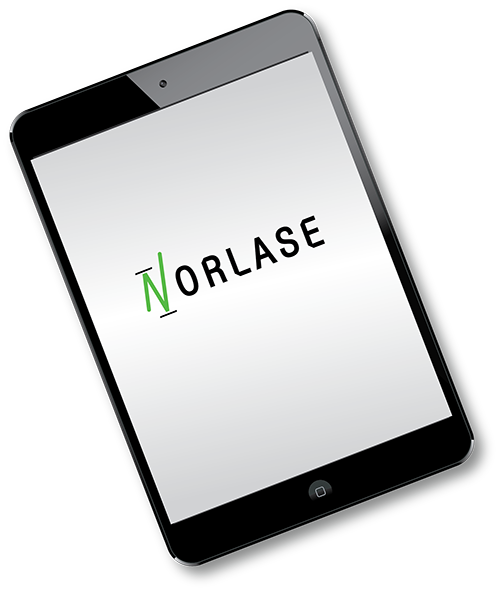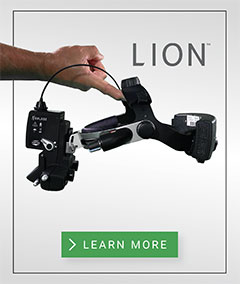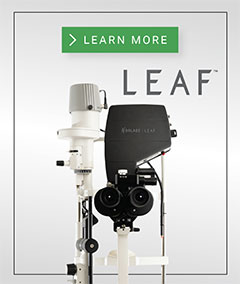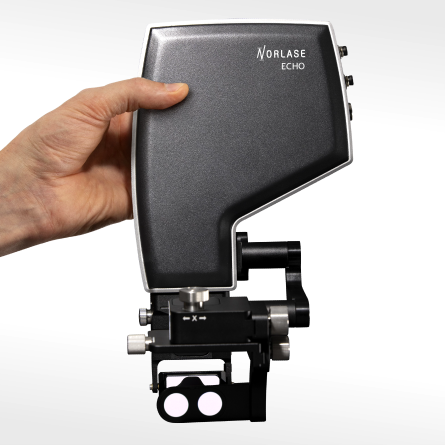What is Age-related Macular Degeneration of the Eye? Symptoms, Causes, Treatment, and more.
Age-related macular degeneration (AMD) is a serious eye disease. It occurs when abnormal activity in the back of the eye leads to central vision loss and other visual problems. Learn the basics of AMD, including types, risk factors, prevention, and treatment.
1.0 What is Age-related Macular Degeneration (AMD)?
Age-related macular degeneration (AMD) is an eye disease caused by damage to the macula, a part of the retina (the back part of the eye). The macula is mainly responsible for central vision, and when AMD occurs, patients typically lose central vision and visual clarity.
Macular degeneration affects over 11 million people with AMD in the United States and over 170 million patients worldwide.
At what age does age-related macular degeneration usually begin?
Macular degeneration is most commonly diagnosed in patients aged 55 and older. However, the American Academy Ophthalmology (AAO) considers being over 50 years of age a risk factor for developing AMD.
What percentage of age-related macular degeneration patients go blind?
Although AMD can cause significant central vision loss, total blindness is rare. That said, the central vision loss associated with AMD can progress to the point where a patient is considered legally blind, negatively impacting quality of life.
1.1 Types of AMD
There are two types of AMD, called “Dry AMD” and “Wet AMD.”
Dry AMD, sometimes called atrophic AMD, occurs when the macula thins with age. When this occurs, drusen – small protein clusters – start to grow on the macula, leading to central vision loss. Dry AMD is the more common form of macular degeneration, affecting 80% of all patients.
Wet AMD, sometimes called advanced neovascular AMD, is rarer than dry AMD. However, it is much more urgent. It occurs when abnormal blood vessels appear near the retina, damaging the macula and leading to rapid, often severe vision loss.
2.0 Signs and Symptoms
Dry AMD occurs in three stages: early, intermediate, and late, in order of increasing severity. Wet AMD is considered a late-stage event.
Early AMD doesn’t cause any symptoms: a patient simply won’t notice any change in vision. Intermediate AMD causes mild visual changes (such as central blurriness or more difficulty seeing in low light) in some patients, but none in others. Late AMD causes noticeable visual impairments, such as distorted or heavily blurred vision. Additionally, a patient may perceive blank spots in his or her vision, as well as struggle to see color accurately.
One way patients can monitor for visual changes is with an Amsler grid. An Amsler grid is used at home or in the clinic, and consists of black lines on a white background in a dense grid pattern. If lines appear warped or distorted, macular damage is implied and further testing is warranted.
2.1 Risk Factors for Age-related Macular Degeneration
There are several risk factors that make a patient more likely to be diagnosed with AMD. As mentioned previously, age is an important risk factor, with patients over 55 years of age being more likely to develop the disease.
Additional risk factors identified by the AAO include:
- have a family history of AMD
- smoke cigarettes
- are white
- eat a diet high in saturated fat (found in foods like meat, butter, and cheese)
- are overweight
- have hypertension (high blood pressure)
3.0 Prevention
Can you stop macular degeneration from progressing?
It is possible to stop macular degeneration from progressing. By working with an eye doctor, patients can adopt healthy lifestyle changes designed to slow the disease’s progression or reduce their chances of developing the condition.
How can you lower your risk of developing age-related macular degeneration?
According to the NIH, patients can potentially lower their risk of AMD by:
- Quitting smoking
- Getting more exercise
- Maintaining healthy blood pressure and cholesterol levels
- Eating healthy foods, such as leafy green vegetables and fish
What foods should be avoided with macular degeneration?
According to SightMatters, foods to avoid include:
- Processed foods that contain trans fats
- Tropical oils, like palm oil (use vitamin E–rich safflower and corn oil instead)
- Lard and vegetable shortening, and margarine
- High-fat dairy foods (eggs in moderation are a good source of eye-healthy nutrients)
- Fatty beef, pork and lamb
- Sugars and sweeteners
Lutein and zeaxanthin have been identified as carotenoids that play an important role in combating the development of AMD. They block the type of light that harms cells in the macula, and also act as antioxidants. Diets high in these carotenoids have been associated with having a lower risk of AMD.
According to VeryWell Health:
lutein and zeaxanthin are found in green leafy vegetables, and yellow and orange pigment foods such as spinach, kale, turnip greens, dandelion greens, mustard greens, collards, Brussels sprouts, winter squash, summer squash, and pumpkin. One cup of cooked frozen spinach contains about 29.8 mg of lutein and zeaxanthin
4.0 What Is The Best Treatment For Macular Degeneration?
Unfortunately, there is no treatment method for dry AMD. To combat the spread of drusen, doctors focus on providing patients preventative, lifestyle-based measures intended to slow disease development and preserve as much vision as possible, for as long as possible.
Eye doctors use two types of treatment to slow the progression of wet AMD: anti-VEGF injections and laser photocoagulation. Sometimes, a combination of the two is used. Anti-VEGF injections are delivered directly to the retina via a small needle; they block endothelial growth factor, a key cause of the abnormal blood vessels that cause damage to the macula. Laser photocoagulation breaks up the blood vessels directly, allowing the doctor to treat with surgical precision.
Can age-related macular degeneration be cured?
AMD cannot be cured, but serious adverse effects can be delayed or mitigated through early detection and treatment. This makes routine eye health visits crucial, especially over the age of 55.
What is the newest treatment for macular degeneration?
There are several emerging treatment methods for macular degeneration. On the laser side, Norlase is innovating in the area of green laser devices. Green lasers are calibrated to a specific wavelength of light capable of penetrating deep into ocular tissue. Norlase’s products include the LION laser indirect ophthalmoscope and LEAF laser photocoagulator. Both devices are approved in the United States and Europe for the treatment of retina and glaucoma disease, including wet AMD. Norlase devices are extremely portable, efficient, and lightweight, improving treatment versatility and reducing operational and cost barriers to treatment.
Next Steps
If you suspect that you have or may be at increased risk for age-related macular degeneration – either Dry AMD or Wet AMD – please contact an appropriate medical professional, such as a local eye doctor.
For more information about how Norlase is impacting the future of retina and glaucoma treatment, visit our blog.
Sources:
- https://www.nei.nih.gov/learn-about-eye-health/eye-conditions-and-diseases/age-related-macular-degeneration
- https://www.aao.org/eye-health/diseases/amd-macular-degeneration
- https://www.ncbi.nlm.nih.gov/pmc/articles/PMC5178091/
- https://www.hopkinsmedicine.org/health/conditions-and-diseases/agerelated-macular-degeneration-amd
- https://www.webmd.com/eye-health/news/20181004/mediterranean-diet-may-help-preserve-your-vision
- https://www.verywellhealth.com/diet-for-macular-degeneration-4844877
-
What is Age-related Macular Degeneration of the Eye? Symptoms, Causes, Treatment, and more.
Age-related macular degeneration (AMD) is a serious eye disease. It occurs when abnormal activity in the back of the eye leads to central vision loss and other visual problems. Learn the basics of AMD, including types, risk factors, prevention, and treatment.
1.0 What is Age-related Macular Degeneration (AMD)?
Age-related macular degeneration (AMD) is an eye disease caused by damage to the macula, a part of the retina (the back part of the eye). The macula is mainly responsible for central vision, and when AMD occurs, patients typically lose central vision and visual clarity.
Macular degeneration affects over 11 million people with AMD in the United States and over 170 million patients worldwide.
At what age does age-related macular degeneration usually begin?
Macular degeneration is most commonly diagnosed in patients aged 55 and older. However, the American Academy Ophthalmology (AAO) considers being over 50 years of age a risk factor for developing AMD.
What percentage of age-related macular degeneration patients go blind?
Although AMD can cause significant central vision loss, total blindness is rare. That said, the central vision loss associated with AMD can progress to the point where a patient is considered legally blind, negatively impacting quality of life.
1.1 Types of AMD
There are two types of AMD, called “Dry AMD” and “Wet AMD.”
Dry AMD, sometimes called atrophic AMD, occurs when the macula thins with age. When this occurs, drusen – small protein clusters – start to grow on the macula, leading to central vision loss. Dry AMD is the more common form of macular degeneration, affecting 80% of all patients.
Wet AMD, sometimes called advanced neovascular AMD, is rarer than dry AMD. However, it is much more urgent. It occurs when abnormal blood vessels appear near the retina, damaging the macula and leading to rapid, often severe vision loss.
2.0 Signs and Symptoms
Dry AMD occurs in three stages: early, intermediate, and late, in order of increasing severity. Wet AMD is considered a late-stage event.
Early AMD doesn’t cause any symptoms: a patient simply won’t notice any change in vision. Intermediate AMD causes mild visual changes (such as central blurriness or more difficulty seeing in low light) in some patients, but none in others. Late AMD causes noticeable visual impairments, such as distorted or heavily blurred vision. Additionally, a patient may perceive blank spots in his or her vision, as well as struggle to see color accurately.
One way patients can monitor for visual changes is with an Amsler grid. An Amsler grid is used at home or in the clinic, and consists of black lines on a white background in a dense grid pattern. If lines appear warped or distorted, macular damage is implied and further testing is warranted.
2.1 Risk Factors for Age-related Macular Degeneration
There are several risk factors that make a patient more likely to be diagnosed with AMD. As mentioned previously, age is an important risk factor, with patients over 55 years of age being more likely to develop the disease.
Additional risk factors identified by the AAO include:
- have a family history of AMD
- smoke cigarettes
- are white
- eat a diet high in saturated fat (found in foods like meat, butter, and cheese)
- are overweight
- have hypertension (high blood pressure)
3.0 Prevention
Can you stop macular degeneration from progressing?
It is possible to stop macular degeneration from progressing. By working with an eye doctor, patients can adopt healthy lifestyle changes designed to slow the disease’s progression or reduce their chances of developing the condition.
How can you lower your risk of developing age-related macular degeneration?
According to the NIH, patients can potentially lower their risk of AMD by:
- Quitting smoking
- Getting more exercise
- Maintaining healthy blood pressure and cholesterol levels
- Eating healthy foods, such as leafy green vegetables and fish
What foods should be avoided with macular degeneration?
According to SightMatters, foods to avoid include:
- Processed foods that contain trans fats
- Tropical oils, like palm oil (use vitamin E–rich safflower and corn oil instead)
- Lard and vegetable shortening, and margarine
- High-fat dairy foods (eggs in moderation are a good source of eye-healthy nutrients)
- Fatty beef, pork and lamb
- Sugars and sweeteners
Lutein and zeaxanthin have been identified as carotenoids that play an important role in combating the development of AMD. They block the type of light that harms cells in the macula, and also act as antioxidants. Diets high in these carotenoids have been associated with having a lower risk of AMD.
According to VeryWell Health:
lutein and zeaxanthin are found in green leafy vegetables, and yellow and orange pigment foods such as spinach, kale, turnip greens, dandelion greens, mustard greens, collards, Brussels sprouts, winter squash, summer squash, and pumpkin. One cup of cooked frozen spinach contains about 29.8 mg of lutein and zeaxanthin
4.0 What Is The Best Treatment For Macular Degeneration?
Unfortunately, there is no treatment method for dry AMD. To combat the spread of drusen, doctors focus on providing patients preventative, lifestyle-based measures intended to slow disease development and preserve as much vision as possible, for as long as possible.
Eye doctors use two types of treatment to slow the progression of wet AMD: anti-VEGF injections and laser photocoagulation. Sometimes, a combination of the two is used. Anti-VEGF injections are delivered directly to the retina via a small needle; they block endothelial growth factor, a key cause of the abnormal blood vessels that cause damage to the macula. Laser photocoagulation breaks up the blood vessels directly, allowing the doctor to treat with surgical precision.
Can age-related macular degeneration be cured?
AMD cannot be cured, but serious adverse effects can be delayed or mitigated through early detection and treatment. This makes routine eye health visits crucial, especially over the age of 55.
What is the newest treatment for macular degeneration?
There are several emerging treatment methods for macular degeneration. On the laser side, Norlase is innovating in the area of green laser devices. Green lasers are calibrated to a specific wavelength of light capable of penetrating deep into ocular tissue. Norlase’s products include the LION laser indirect ophthalmoscope and LEAF laser photocoagulator. Both devices are approved in the United States and Europe for the treatment of retina and glaucoma disease, including wet AMD. Norlase devices are extremely portable, efficient, and lightweight, improving treatment versatility and reducing operational and cost barriers to treatment.
Next Steps
If you suspect that you have or may be at increased risk for age-related macular degeneration – either Dry AMD or Wet AMD – please contact an appropriate medical professional, such as a local eye doctor.
For more information about how Norlase is impacting the future of retina and glaucoma treatment, visit our blog.
Sources:
- https://www.nei.nih.gov/learn-about-eye-health/eye-conditions-and-diseases/age-related-macular-degeneration
- https://www.aao.org/eye-health/diseases/amd-macular-degeneration
- https://www.ncbi.nlm.nih.gov/pmc/articles/PMC5178091/
- https://www.hopkinsmedicine.org/health/conditions-and-diseases/agerelated-macular-degeneration-amd
- https://www.webmd.com/eye-health/news/20181004/mediterranean-diet-may-help-preserve-your-vision
- https://www.verywellhealth.com/diet-for-macular-degeneration-4844877

DIDN’T FIND WHAT YOU’RE LOOKING FOR?
Let us know how we can help!
DIDN’T FIND WHAT YOU
WERE LOOKING FOR?
Let us know how we can help!




